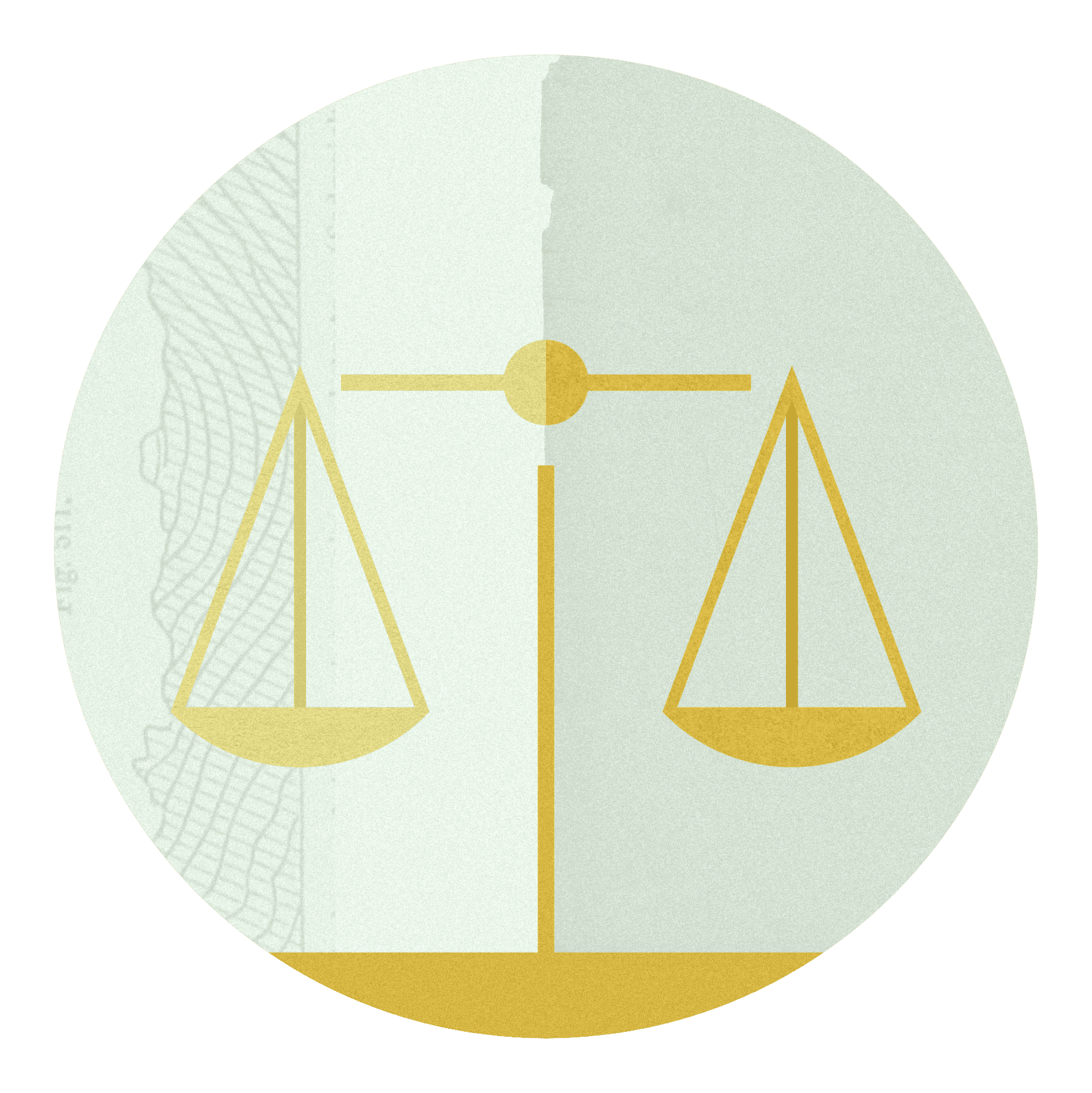When Duke University launched its Center for Science and Justice at an event in September, the featured guests were Yusef Salaam and Raymond Santana, two members of the Central Park Five, now known as the Exonerated Five. Their presence seemed appropriate. Salaam and Santana were exonerated by DNA evidence in the 1989 assault of a Central Park jogger; the center is dedicated to improving the criminal justice system through scientific research. And the center’s director, Brandon Garrett, had worked on Salaam and Santana’s case as a young lawyer at a civil rights firm. For Garrett, it was one of multiple DNA exoneration cases that shaped his future—and shook his view of the criminal justice system.
“Everything looks different through the prism of a DNA exoneration,” says Garrett, the L. Neil Williams, Jr. Professor of Law at Duke. “It causes you to question everything. So you wonder: How could the jury have read the jury instructions and convicted an innocent person? How could routine police questioning have resulted in a false confession? How could the eyewitness have identified an innocent man?”
The new center will address these and other questions. Under Garrett’s leadership, its focus will include the accuracy of evidence in criminal cases, the role of risk (judges often do not follow risk assessment recommendations that would divert low-risk felons from prisons), and alternatives to arrest and incarceration. What makes the center unique, says Garrett, is its interdisciplinarity focus: The center will bring together faculty and students in law, medicine, public policy, and the arts and sciences. Why work with such a diverse group of experts? To Garrett, the criminal justice system involves not just the law, but areas such as mental health. That’s why he’s teaming with everyone from statisticians to psychologists.
“Everything in the criminal justice system touches on behavior,” he says. “We need tools to analyze both quantitative and qualitative data. Social problems don’t come neatly divided into simple boxes.”
As a leading expert in criminal procedure, the death penalty, and wrongful convictions, Garrett is the ideal person to lead the center. Among his accomplishments: He studied the trial transcripts of the nation’s first 250 DNA exonerees, which led to his 2011 book, Convicting the Innocent. His research has focused on subjects such as false confessions, forensics, and eyewitness memory, and his work has been cited by the U.S. Supreme Court, lower federal courts, state supreme courts, and courts in other countries, including the supreme courts of Canada and Israel. The New Jersey Supreme Court and the Oregon Supreme Court have changed eyewitness identification procedures based in part on Garrett’s research. He maintains a website, convictingtheinnocent.com, that tracks patterns among DNA exoneration cases.
Garrett was initially an art major in college and still paints—which may influence his criminal justice work. “I think it’s important to use different sides of one’s brain,” he says. “I’ve always cared about how we visualize data and information.” He also believes it’s important to supplement data with stories. “It’s more compelling to policymakers to understand qualitatively why people are having a hard time doing what they would like to do, and then also seeing what is borne out by the statistics.”
As an example, Garrett cites a study on driver’s license suspensions in North Carolina he co-authored with Dr. William Crozier.
“The quantitative information was pretty staggering,” he says. “One in seven adults in North Carolina has a suspended driver’s license. That’s over a million people.” The problem disproportionately affects low-income people and people of color, the data showed. But Garrett found it “incredibly powerful” to hear from two women with suspended driver’s licenses—in a state without extensive public transportation—who need to drive to jobs, who need to take kids to school, yet can’t drive “without fear of being pulled over by the police at any time.” They become trapped in what Garrett calls a cycle of draconian punishments and everyday injustices.
“They were describing these Kafkaesque situations where they’re spending a big chunk of their lives going to appointments, going to appearances for different traffic tickets, and something so simple as a traffic ticket turns into years and years of misery,” he says. It was an eye-opening message for law students, Garrett found. “It wasn’t about a miscarriage of justice where someone spends years in prison for a crime they didn’t do. Some of these traffic tickets may have been fair, some may have been unfair. But it’s another example of how the criminal justice system can horribly deprive people.”
Another troublesome trend, he says, is that the system continues to rely on unreliable evidence. “Some of that evidence has been used for decades,” he says. “Forensic scientists can say, ‘We’ve never studied error rates for fingerprinting, and it’s been used for over a hundred years. We’ve never seen problems.’ Let’s keep relying on it until something tells us we can’t.’”
Yet with some types of evidence, such as bite-mark comparisons, the error rates are high. Scientists say the technique is so unreliable that it shouldn’t be used in court until there’s a more accurate alternative, notes Garrett, but judges often defer to jurors, saying they can reach their own conclusions about the reliability of evidence (which raises a question: How are jurors supposed to assess the science?). And judges frequently will not allow the defense to bring in experts to explain why evidence is unreliable.
“It seems terribly unfair, and I think there’s a reason why there’s been so much media attention to the problems in forensic science over the last few years,” says Garrett. “It’s a national scandal.”
Change has been slow, he says. Courts are tradition-bound and operate on precedent. But wrongful conviction cases have raised awareness of the problems.
“Science doesn’t operate based on precedent,” says Garrett. “Sometimes old scientific understandings are completely overturned, and if new studies show that bite-mark evidence is highly unreliable, that’s better evidence than whatever the court said 30 years ago.”
The nation is undergoing an innocence revolution, Garrett believes. “Every year, we see legislation introduced across the country to improve the way that we do police questioning, videotaping, interrogations, eyewitness identification procedures, as well as forensics,” he says. “I don’t think anyone thought that there would be so much change. It didn’t happen overnight, but the momentum has been building for years.”
Garrett sees the innocence revolution as part of a broader push to improve the criminal justice system—not just to avoid wrongful convictions, but to explore areas ranging from bail, fines, and fees to plea bargaining. He will continue to focus on areas such as eyewitness identification, false confessions, treatment in cases affected by the opioid epidemic, and the lack of best practices and procedures in forensics labs (the new center will work with the federal Center for Statistics and Applications in Forensic Evidence to help crime labs improve their procedures).
“I think the public, policymakers, and researchers are now engaged with every stage of the criminal justice system in a way that we weren’t 10 years ago,” he says. “That’s what makes the role of the center so exciting. We haven’t had an opportunity like this in decades to really look at every stage in the criminal justice system with an open mind and consider new approaches.”











